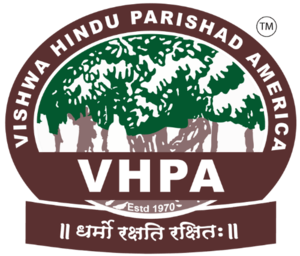There is a growing movement among some Hindus in the United States to persuade town Boards of Education to declare a day in November as a school holiday so as to enable Hindu families to share the venerable and much loved festival Diwali. This is important and appropriate as the estimates of Hindus in America vary with numbers reaching close to 4 million. There is, across the country, a growing number of our children enrolled in public schools. In one of our towns in Connecticut we learn that the number of Hindu students is close to 4000 (20%). Therefore appealing to Boards of Education to declare a Diwali holiday is consistent with the decades old rich immigrant experience in America. Consider the background.
The United States of America is the envy of the world, not because of its fighter aircraft and submarines, but because of its success in assimilating and building a composite society from a wide variety of immigrants with vastly different cultural and religious backgrounds and political beliefs. Thus Irish Americans, Italian Americans and all other hyphenated Americans are patriots in love with this country even as they are free to practice their unique heritage and cultural traditions. So it is with Indian-Americans. Most of the immigrants from India since the 1960s came here not fleeing something but to obtain higher education. Most of us intended to return but the magnetism of America with its unique and welcoming attitude made thousands of us settle here and we now feel part of the mainstream.
No further proof of our community settling here is needed than the fact that there are now several hundred Hindu temples in the country. We in Connecticut were able to build and sanctify a temple in Middletown as far back as 1999. The inspiration obviously came from the experiences of earlier immigrants who made sure that their children and grandchildren and succeeding generations maintain and practice the faith and culture derived from their countries of origin. And of course, generations later, that is exactly what we have: a multicultural, pluralistic society where you are free to enjoy your own art, music, food and other cultural components even as our American born children grow up to be loyal, productive, hard-working, prosperous citizens of this great country.
Therefore it is not unusual for us to attempt to add an Indian component to the education system and seek recognition of a holiday that exemplifies the culture and tradition of the old country we came from decades ago. This, we believe, adds yet another colorful fiber to the already magnificent fabric of America. We propose that school districts across this country formally recognize the strong Indian-American community and its contributions to science and technology, education, healthcare, business, service on some town councils and boards, state legislatures, governments and the Congress. And of course the Vice President of the United States, Kamala Harris, is of Indian heritage.
Simply put, Diwali celebrates the triumph of good over evil. There are many legends that tell stories of serious conflicts which endangered the lives of citizens and required divine intervention to restore what Hindus call Dharma. The literal meaning of the word diwali is a “row of lamps.” Earthen lamps (small enough to fit in a child’s palm) are still used in rural India. Filled with a couple of tablespoonfuls of oil and a cotton wick, they are lit and arranged in a pattern or rows on a home’s or public building’s threshold, roof edges, window sills, and front porch. In urban areas, electric bulbs are used. The row after row of these lights, in every building, proclaim a happy occasion for one and all. The event is celebrated in the Hindu month of Kartika in the dark fortnight that falls in late October or early November.
So, what are some of these legends that form the basis for that holiday:
The return of the epic hero Rama to his kingdom after 14 years of exile. Diwali is considered to be the day when the epic hero made his triumphal return to his capital Ayodhya after 14 years of exile and killing Ravana who had kidnapped Sita. Legend has it that the overjoyed citizens decorated their homes and lit hundreds of lamps to greet their king.
Naraka Chaturdashi: The killing of demon Narakasura by Krishna. Narakasura was a menace who kidnapped women and made the lives of priests and monks a living hell. People breathed a sigh of relief and set aside a day of celebration, on Chaturdashi nakshatra during Krishna Paksha, the dark half of the Hindu month Kartika (generally late October or early to mid-November), of the triumph of good over evil.
Worshipping Dhanalakshmi, the goddess of wealth: Merchants and businessmen worship Lakshmi in the form of Dhanalakshmi (Lakshmi, the goddess of wealth) during the Diwali festival. In fact, businesses use this special day to close the books for the year and make preparations to begin the new fiscal year. The day is believed to coincide with the emergence of the goddess from the cosmic ocean during the great churning event when gods and demons churned up many precious items that had been lost during the Great Flood (See page 116-117 of my book Hinduism for Dummies about Amrtamanthana by devas and danavas).
Wearing new clothes and jewelry during Diwali is a must, as is distribution of a variety of sweets. It is customary to light up colorful fire crackers and enjoy the sound and light. The excitement among clothing and jewelry merchants is palpable as they expect to make a lot of money during the week before Diwali!
The Diwali season is also a bonanza for those who sell sweets. Many varieties of aromatic, colorful, and delicious sweets are made fresh just for this season, and thousands of pounds of these delicacies are bought and distributed among family and friends. In large cities, the whole city erupts with gaiety, color, smiles, and sweets.
So we can argue that the festival is non-religious or semi-religious as the primary focus is the celebration of good over evil. A Hindu Thanksgiving if you will. As stated above the festival falls either in October or November. But the Hindu lunar calendar varies from year to year so we don’t have the same date for the festival each year.
What is the issue in adding a Diwali holiday in public schools? The boards of education in some school districts are reluctant to add another day in which the students are not attending classes. In some parts of the United States students lose a day or many due to weather conditions such as heavy snow and ice which require the districts to add these lost days to the end of the semester. Clearly this postpones the last date of the school year and inconveniences families planning their summer vacations.
More complicated is the issue of other religions claiming their need to have one or more school holidays to celebrate their festivals. Where does one draw the line?
Besides, should religion even factor in the consideration of school holidays? Traditionally Easter and Christmas (clearly Christianity-driven for the obvious reason that the first founders of the
established 1776 democracy were Christians) have been celebrated as holidays in schools. The special holiday, Thanksgiving, may be explained as non-religious or semi-religious as it is harvest-related, celebrating and giving thanks to the Almighty for the bounty of food grown in the new land when the English pilgrims set foot in Plymouth, Massachusetts.
With this background, we offer two models for the boards of education in the United States to consider declaring Diwali, the Indian Festival of Lights, as a school holiday. But before that let me comment on our communities’ role in the context of our involvement with town affairs. That pertains to the nature and extent of interaction between the Hindu community and the people and leaders in town. In a democracy policies are enacted based primarily on the basis of demographics, active organizations and active voices. While our people hold important positions in corporations, healthcare, academia and business, what is the level of our participation in the town affairs? Do we attend meetings of the Town Council and Board of Education and offer our opinions and ideas? Do we know the shakers and movers there?
Do we invite leaders in town when we have a Hindu event or celebration? Do we volunteer to help in a library or a senior center? Remember volunteering is America’s apple pie! In short, how much does the town know us, our roles in society, our culture, food and music? Do we participate in major events in town? I submit that the strength of such interaction goes a long way when we need the town leadership to consider something of special interest to our community. This is an important issue that needs to be taken seriously by our community.
Now about the models. The first model is to set aside a day in late October or mid-November as scheduled in the Hindu calendar for that year and declare a school holiday so our children may enjoy celebrating the day with their schoolmates and their families.
The second model may appeal to some school districts. In the context of declaring a school holiday for Diwali, my recommendation is that school districts declare Friday after the Thanksgiving Thursday as Diwali Holiday. This overcomes the concern about adding another day to the school year. We can justify this from the fact that there is no fixed date for Diwali anyway from year to year, and the festival usually occurs in early or mid-November. This does not however prevent some Hindu families from celebrating the festival in their homes on the day prescribed in the calendar if they chose to.
Further the spirit of the festival is one of joy and gratitude for a successful year and looking forward to a New Year. This fits perfectly with the concept of Thanksgiving and may follow the American Thanksgiving with a Hindu Thanksgiving.
This concept is similar to my wife Kamla’s introduction in the early 80s of the Amritamanthana concept at our temple in Connecticut in which Hindu children decorate Kalpa Vrksha, a gift-giving “Christmas” tree in December with objects emerging from that great story of the Amrtamanthana.
Let us offer these options to the Boards of Education in each of the 16,800 school districts in the country and enjoy two days in November with two Thanks givings!
So let us make this Hindu holiday an American holiday!
Dr. Srinivasan is the author of several articles and books on Hinduism published in the United States, India and the U.K. https://www.avsrinivasan.com



![[ India Today ] Ohio senator JD Vance thanks wife, a Hindu, for helping him find Christian faith](https://hinduvishwa.org/wp-content/uploads/2024/06/us-senator-jd-vance-reveals-how-his-hindu-wife-usha-helped-him-find-his-christian-faith-image-re-272530504-16x9_0-120x86.webp)










